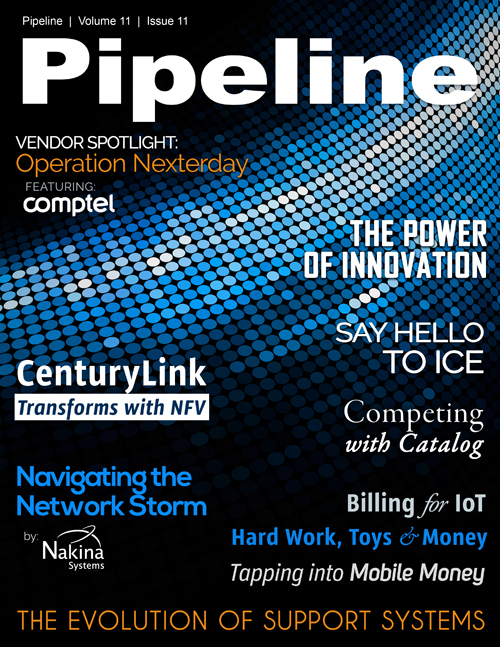Innovating from the Ground Up with a Unified Product Catalog
By: Jesse Cryderman

Communications service providers (CSPs) maintained relatively small product catalogs for many, many years. Following deregulation and the rise of cable VoIP service and telco-TV, things got a little more complicated. Competitive pressure and new service options increased complexity across all levels within service provider organizations, from ordering to provisioning to support. The arrival of mobile certainly increased complexity further; but for the most part, until recent years, CSPs sold a handful of services that were bundled and sold in different ways, and the purpose-built systems for telecom supported this ecosystem. Today, CSPs are facing the enormous complexity of delivering the promise of Connected Everthing and the Internet of Things (IoT).
Over the past decade, competitive pressure has also skyrocketed and traditional service revenue has taken a hit. Ten years ago, for instance, Skype was barely a blip on the radar. Now, Skype handles nearly 40 percent of the entire size of the conventional international telecom market. WhatsApp serves 700 million active users each month. FreedomPop offers free mobile service. Google is selling fiber and will soon be an MVNO. CSPs must be agile and quick to market with compelling new offers and services, many of which only include communication as an enabling component. This fact, coupled with the expectations of the digital buying experience, has upended the traditional catalog model and is straining legacy support systems.
As operators have attempted to transform from mere utilities to big-box retailers, they’ve experienced support-system deficiencies first-hand, such as order fall out, improper configuration, and poor quality of experience (QoE). In order to remain competitive and relevant and accommodate the digital buying experience, it is essential that CSPs re-tool from the ground up, and it all starts with the catalog.
Catalog innovation
In order to compete in the digital economy, CSPs must essentially become digital-services retailers of hundreds, if not thousands, of product and product variations. They must be able to rapidly design, sell, launch, and scale solutions, integrate their offerings seamlessly with third-party solutions and numerous partners, and constantly manage dynamic promotions and incentive bundling to stay ahead of competitors and meet the needs of an increasingly demanding user base. To top it all off, there are more sales channels than ever before and many operators offer varying products under different brands in different regions.
If catalog innovation simply required the ability to add ever-more SKUs to the product inventory, operators wouldn’t be facing these problems. However, the challenge is much more complex. Service providers aren’t selling potatoes, but a vast number of digital experiences that are dynamic and interdependent, and might originate from other vendors. What is required is a solution that can set up and manage all sellable items, including telecoms-network services, content services, billing services, physical devices, accessories and third-party products or services. The next-gen catalog system must:
- exhibit real-time contextual awareness of what services are available, per inventory, per region, per customer;
- understand the interdependencies of the product or bundle;
- be cognizant of marketing incentives and interface with loyalty programs;
- incorporate real-time recommendations based on big data analytics; and
- interface with all organizational units.
There are many advantages to be gained by implementing a unified, integrated, next-gen product catalog, some apparent, and some not so apparent. While reducing order fallout and improving the front-end of the customer experience have a measurable impact on cost structures, but the benefits extend much further. When done right product catalog can be the cornerstone of innovation, enabling operators to tailor new services to particular customer segments in near real-time.
Organization unification
To effectively run a dynamic business in the digital world, everyone must be on the same page within an organization. This extends from first point of contact to last point of contact, and from marketing to networking to strategic leadership. Each organizational unit should be drawing from the same catalog. Starting here eliminates many delays, lowers unnecessary costs, and improves customer experiences. Additional advantages include more effective self-purchase and self-help portals, enhanced search and discovery, and faster time to market with new services.



















